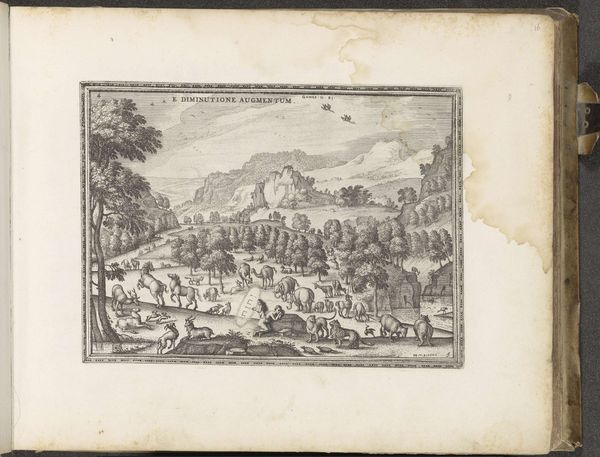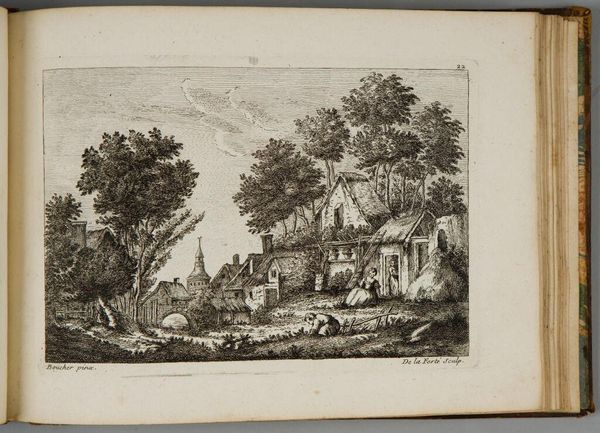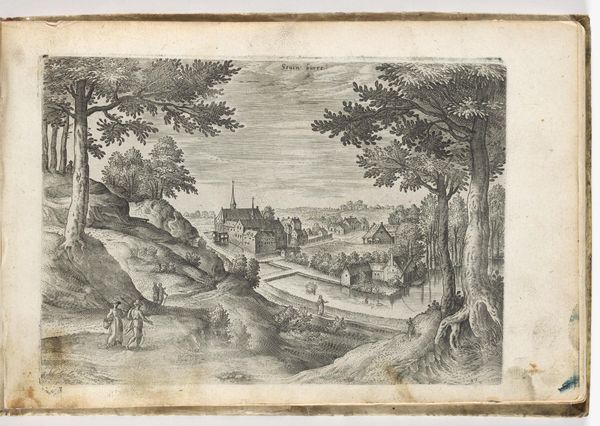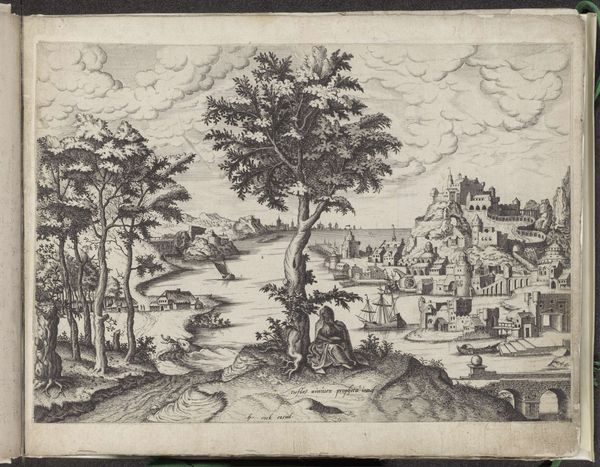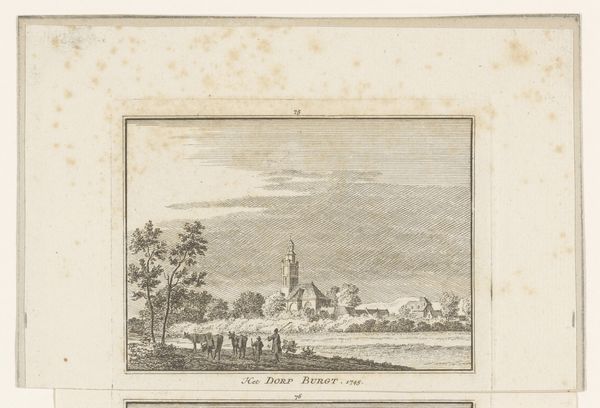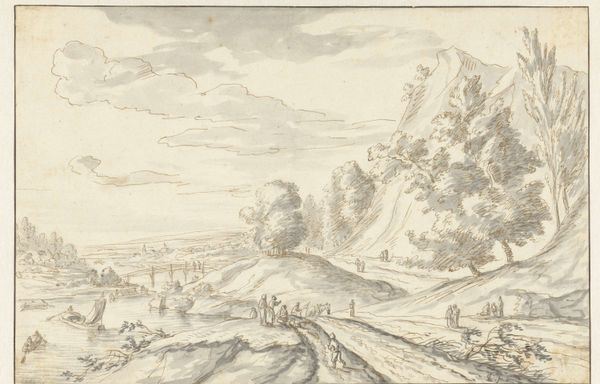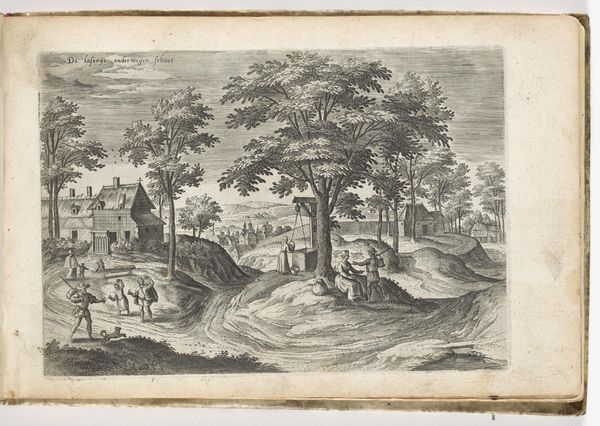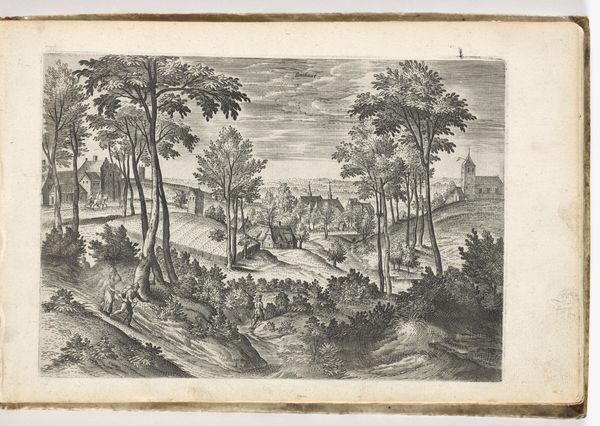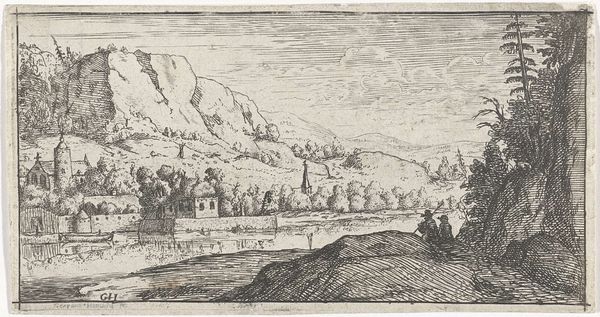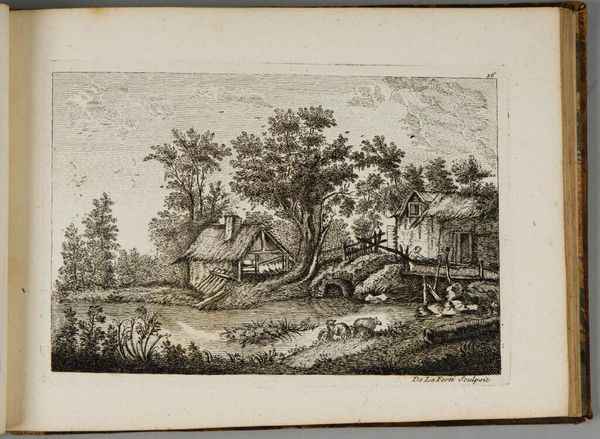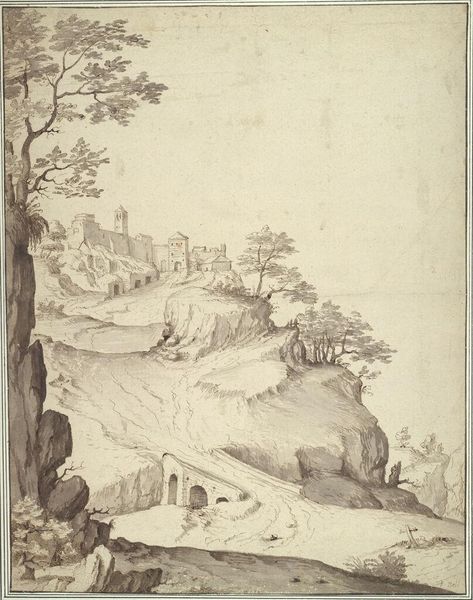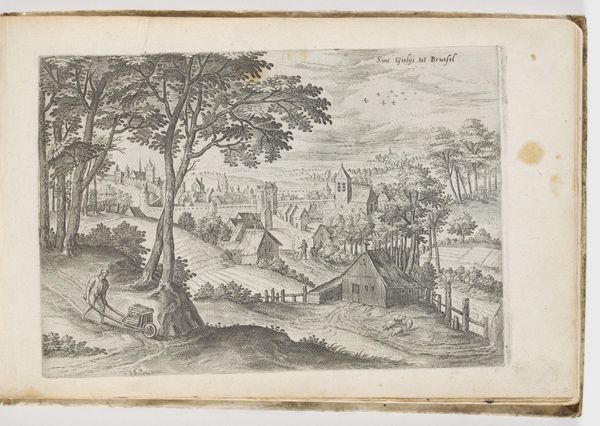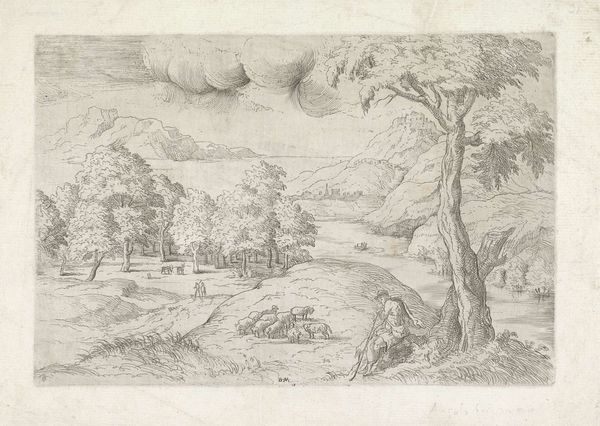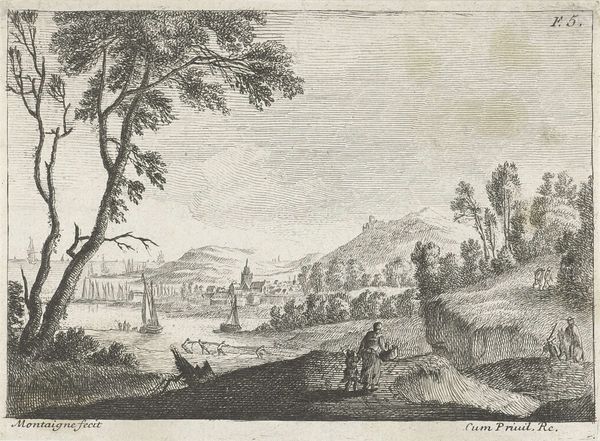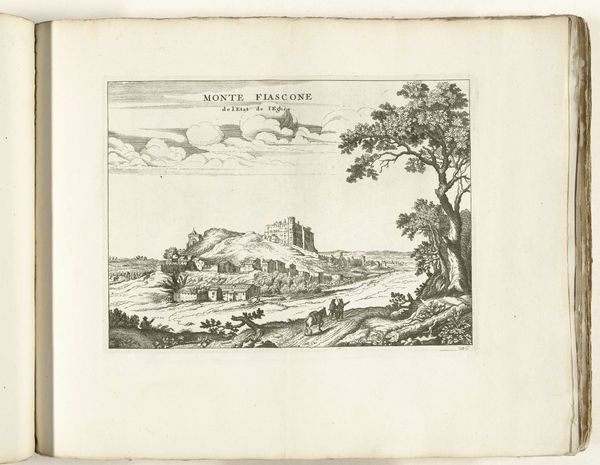
painting, watercolor
#
baroque
#
painting
#
landscape
#
watercolor
#
coloured pencil
#
cityscape
#
watercolor
Copyright: Rijks Museum: Open Domain
Curator: I'm immediately struck by the delicate balance achieved here. There’s a tranquility to the whole composition despite the suggestion of scale with the distant mountain. Editor: Indeed. What we're looking at is "View of a Town at the Foot of a Mountain," a watercolor by Hendrick van Beaumont, created around 1696. It provides a compelling example of Baroque landscape painting. Curator: The composition guides your eye deliberately—starting with the darkened foreground and moving toward that light-filled background, the horizon almost bisecting the frame. It is remarkably well-balanced despite being asymmetrical. Editor: Absolutely. Van Beaumont presents a very specific, cultivated viewpoint. While seemingly an objective view, it's an image embedded in the socio-political contexts of the late 17th century. It evokes a sense of the growing merchant class and their dominion over the landscape. Cityscapes at the time depicted progress. Curator: The technique is interesting too. The use of watercolor lends itself well to rendering light and atmosphere, those hazy distances. Notice, though, how he varies the washes of color. Stronger applications in the foreground, creating that contrast against the gentle gradations in the distance. Editor: Watercolors were easier and more economical than oil. They lent themselves to the proliferation of landscapes among the Dutch merchant class. Works like these became visual reminders of expanding trade and social mobility, accessible luxuries and reflections of cultural identity for many in that growing population. Curator: It’s intriguing how that light seems to emanate not just from the sky but almost from within the mountain itself, drawing you in to discover. Van Beaumont masterfully controls light and shadow to shape our visual journey. Editor: Reflecting further, what this piece represents is a calculated presentation of order and prosperity—art as a testament to power. It gives voice to how landscape, and the very concept of “nature,” became tools for claiming ownership and identity. Curator: The discussion invites further scrutiny of van Beaumont's refined artistic ability. Editor: I agree. This Baroque artwork offers multiple windows into both the visual language of art and the historical narratives it conveys.
Comments
No comments
Be the first to comment and join the conversation on the ultimate creative platform.
